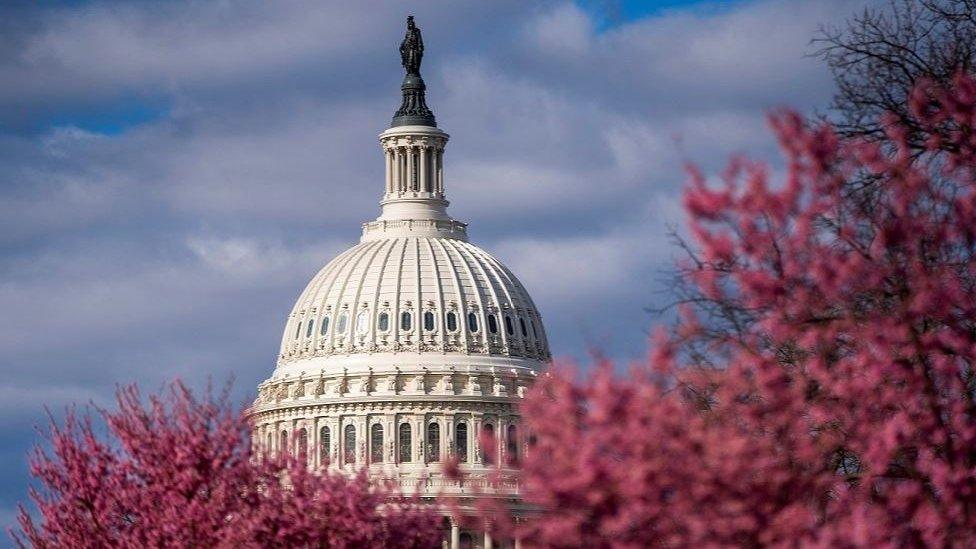Earthshot Prize 2023 finalists - everything you need to know
- Published
- comments

Prince William has arrived in Singapore ahead of Tuesday's Earthshot Prize ceremony.
"It's fantastic to be back in Singapore for this year's Earthshot Prize ceremony, after eleven years," he said. "Singapore's bold vision to be a leader for environmental innovation sets the standard for others to follow."
Fifteen innovators, entrepreneurs, community leaders and activists have been announced as finalists for the 2023 award, which is taking pace in Asia for the first time.
Started by Prince William in 2020, it aims to celebrate and support people and companies working to provide innovative solutions for climate and environmental issues.
There are five 'Earthshots' - or goals: Protect and Restore Nature; Clean Our Air; Revive Our Oceans; Build a Waste-free World; and Fix Our Climate.
Prince William: What is the Earthshot Prize? (2020)
This year, there were more than 1,100 nominees whittled down to three finalists in each category.
All 15 finalists will receive support from The Earthshot Prize Fellowship Program, and the winners will get £1million to help expand their project.
So let's take a look at some of them!
Earthshot Prize to Protect and Restore Nature
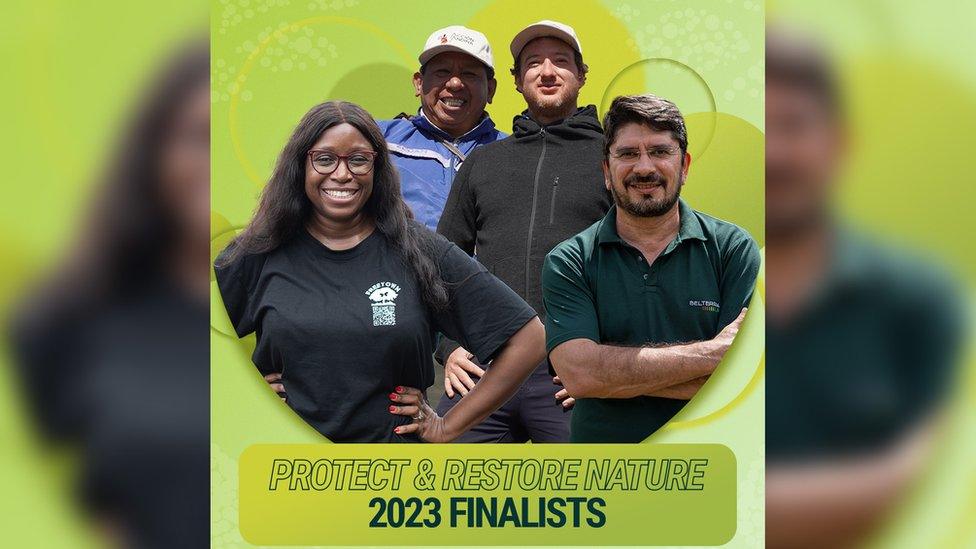
Left to right: Yvonne Aki-Sawyerr (Freetown the Treetown), Constantino Aucca Chutas and Florent Kaiser (Acción Andina) and Valmir Ortega (Belterra)
The aim of the Protect and Restore Nature category is to ensure nature is growing rather than shrinking by 2030.
This includes preserving and restoring natural habitats for animals around the world, conservation efforts and fighting against deforestation.
The Earthshot Prize is given to the candidate(s) who shows the most "outstanding efforts" to meet these challenges.
Freetown the Treetown
Freetown the Treetown is an initiative from the city of Freetown in Sierra Leone where recent population growth and urban development has led to the loss of millions of trees.
Some 70% of the city's trees have been cut down and natural disasters are becoming more common.
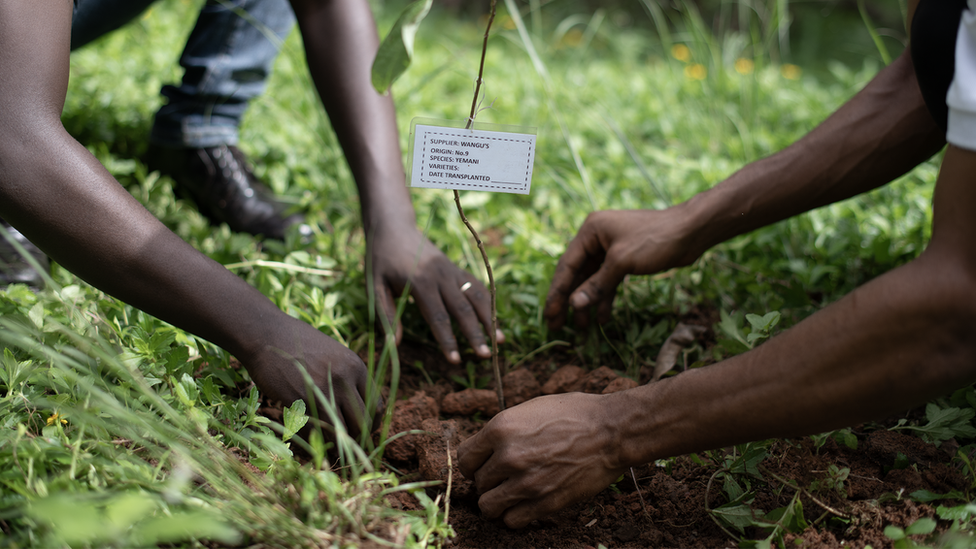
A scheme where residents are paid to plant and monitor trees and mangroves has been introduced with great success - providing a model for other cities struggling with deforestation to copy.
The plan is to restore what has been lost and protect it for future generations with the aim of one million new trees by 2024.
Acción Andina
The Andes Mountain Range in South America is another area struggling with the effects of deforestation.
The Andean Forest is home to a rich diversity of wildlife, including 50 endangered species - but less than 10% of it remains.
The deforestation doesn't only impact wildlife - indigenous communities rely on the land for their survival.
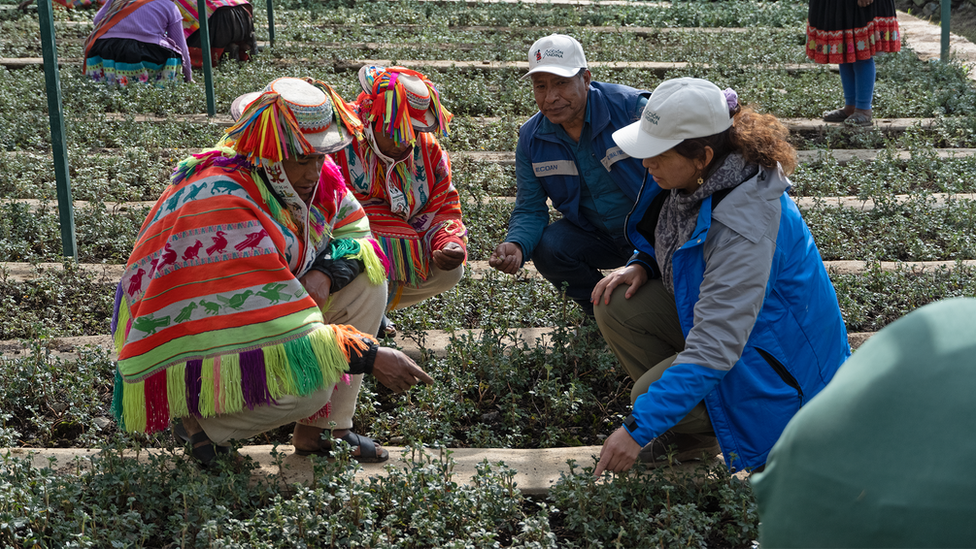
Acción Andina works with thousands of people in local and indigenous communities to protect and restore the forests.
The initiative provides training to local conservation leaders, pays for projects and works closely with communities in the high Andes to help protect nature.
Since 2018, almost 10 million native trees have been planted by Acción Andina across five countries.
Belterra
Deforestation affects the Amazon rainforest which covers about 40% of Brazil - but the country's second largest forest, the Atlantic Forest, is also under threat.
Once the size of South Africa now more than 85% of the forest has been lost to farming and cattle raising.
One way to restore and protect the forests is by using a farming method call regenerative agriculture - reducing use of chemicals, increasing the types of vegetation grown and nourishing the soil to help native plants and wildlife in the area thrive.
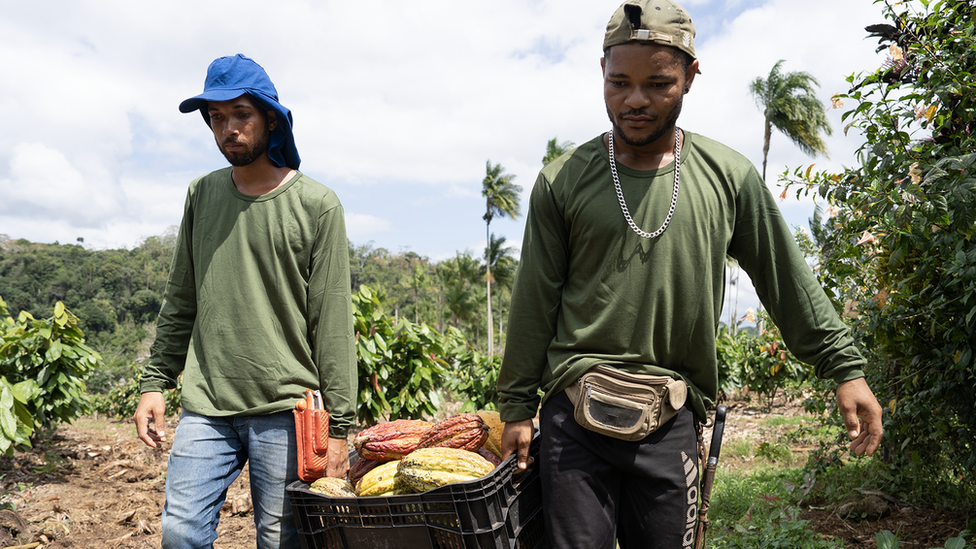
Sustainable farming is difficult for smaller farms so Belterra gives farms support and helps them adopt more sustainable ways of working.
Because of Belterra's work, farmers now earn a sustainable wage and can compete with bigger businesses.
All this, while also helping the planet.
Earthshot Prize to Clean Our Air
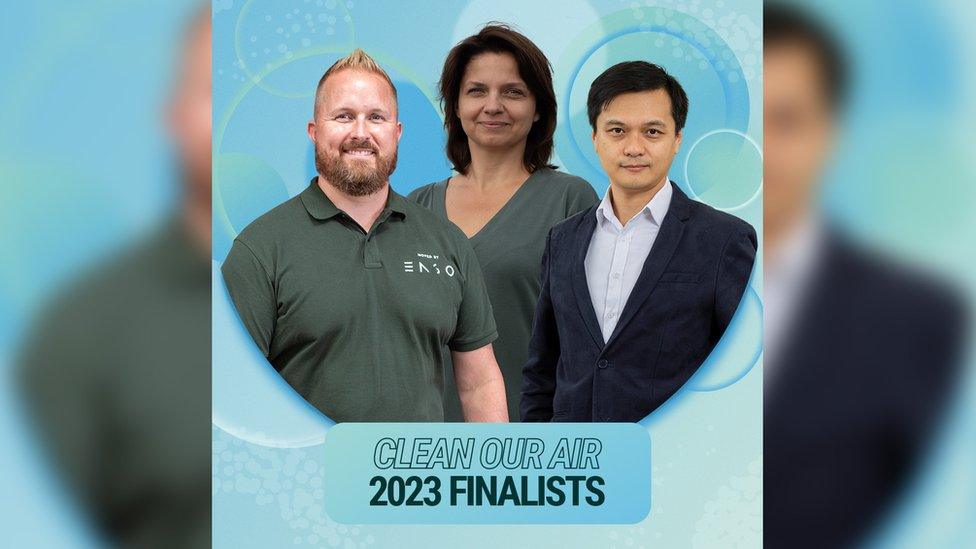
Left to right: Gunnlaugur Erlendsson (ENSO), Anna Dworakowska (Polish Smog Alert) and Justin Hung (GRST)
The Clean Our Air prize is given to the most outstanding effort to overcome the challenges of removing pollution from the air, eliminate using fossil fuels and choosing 100% renewable energy.
ENSO
ENSO is a UK company making tyres for electric cars to reduce their impact on the environment.
What's the problem with conventional tyres? Well the friction they create on the road releases harmful particles that add to air pollution.
Tyres across the world contribute six million tonnes of pollution each year.
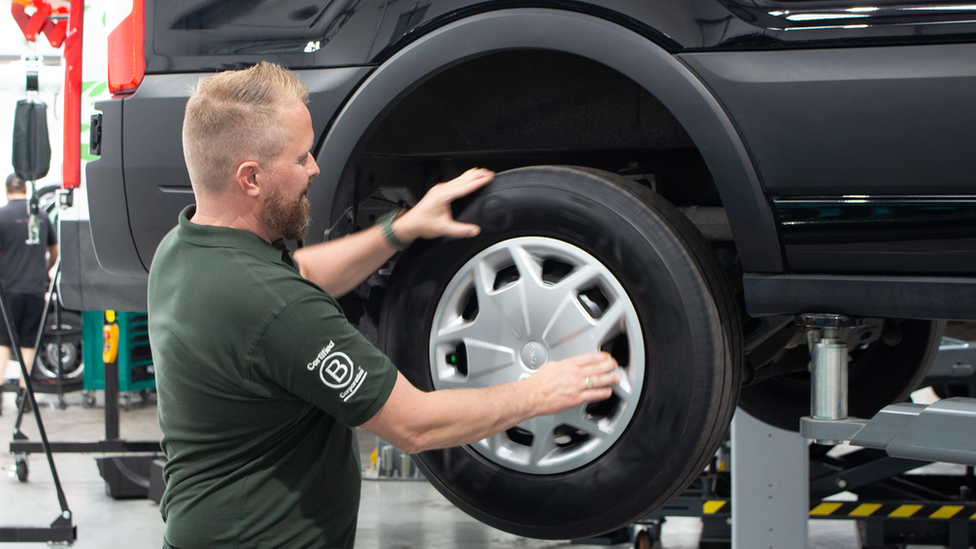
ENSO say the tyres they produce reduce tyre pollution by 35%, and the tyres are so efficient, they can actually take you 10% further with the same energy.
London black cabs and electric delivery fleets are already using ENSO tyres and the company aims to make more than one million low-emission tyres each year by 2026.
Polish Smog Alert
Poland has some of the most toxic air in the EU and a lot of this pollution comes from household boilers burning wood or coal.
The Polish Smog Alert became a national movement to campaign about the impact of polluted air on communities.
The campaign led to Kraków passing a ban on coal and wood in household boilers and 20 more towns have followed since - although the ban is not yet in place everywhere.

Poland has also brought in anti-smog regulations for more than half of the country and homeowners can receive money to switch to more environmentally-friendly and efficient boilers.
Polish Smog Alert hopes another one million homes across Poland will stop burning coal by 2024 and the group also wants to expand this to other countries.
GRST
GRST, a company based in Hong Kong, says it has created a cleaner, safer and cheaper process for making and recycling lithium-ion batteries.
These types of batteries are becoming more popular with the rise of electric vehicles. There are expected to be at least 125 million electric vehicles on the world's roads by 2030 and that means an increased demand for batteries.
But there's only a limited supply of lithium in the world.
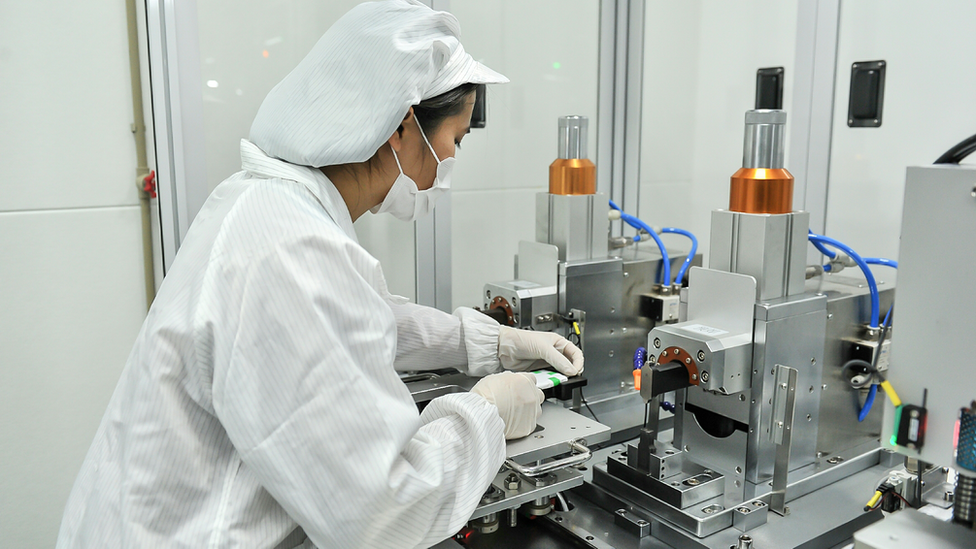
GRST says it has found a way to build batteries without using toxic materials and they can be recycled too.
This new process for making batteries produces 40% less greenhouse gas and GRST say the batteries last longer too.
Earthshot Prize to Revive Our Oceans
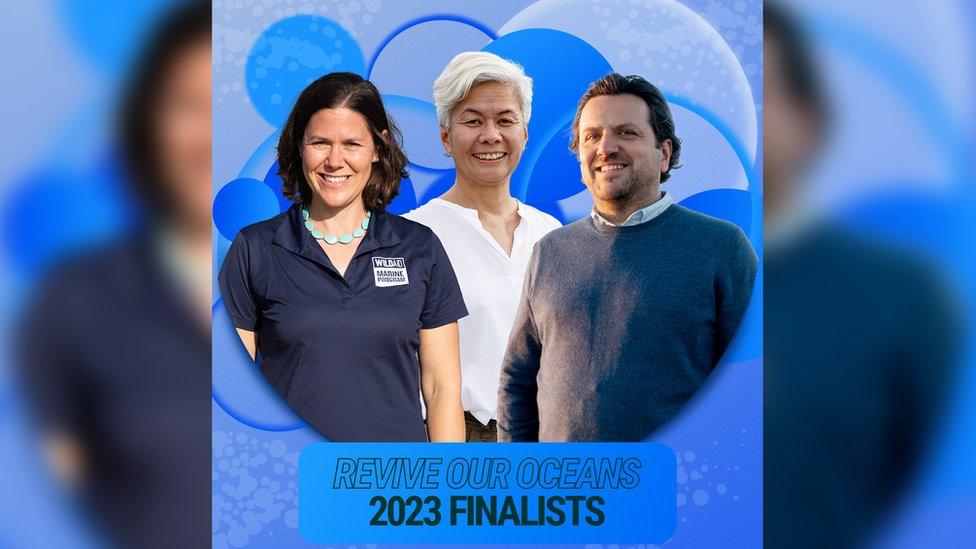
Left to right: Meaghan Brosnan (WildAid Marine Program), Rocky Sanchez Tirona (Coastal 500) and Serge Raemaekers (ABALOBI)
It's not just life on land struggling with the impact of humans, but life underwater too.
More than 70% of Earth is covered by ocean which is being affected by warmer temperatures, pollution and harmful fishing practices, so Earthshot is calling for sustainable use of the ocean.
The prize will go to innovations to help life underwater and end practices harming the wildlife living there.
WildAid Marine Program
There's a big problem with overfishing in many of our oceans and seas that harms wildlife and affects people who use the sea.
While governments are taking steps to protect marine ecosystems through special zones called Marine Protected Areas (MPAs), they can't always be fully protected.
WildAid aims to protect these zones by making sure fisheries within them are sticking to their conservation promise.
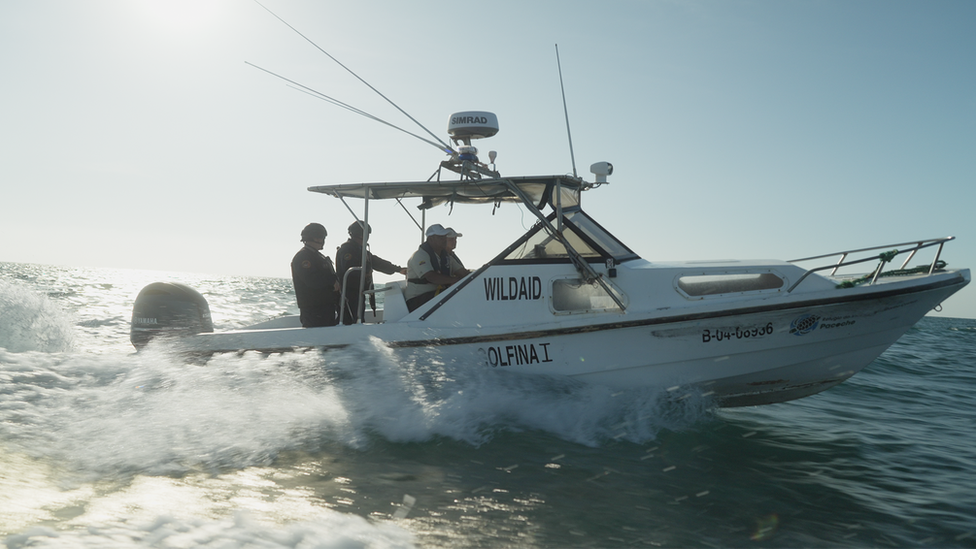
WildAid helps increase the enforcement in MPAs by making sure the people involved have the right tools and resources to do the job.
The programme is already working with MPAs across the world.
Coastal 500
Coastal 500 brings together a network of mayors and leaders in local government from across the world working to restore ocean habitats and protect the coast.
Although coastal waters make up only about 6% of the ocean's surface, they're home to up to 70% of all ocean biodiversity.
But warmer temperatures, plastic waste, pollution, ocean acidification (the ocean becoming too acidic for wildlife) and overfishing are threatening these areas.

Coastal 500, formed in 2021, now has 164 members representing eight developing countries.
Since the organisation started, mayors have reported an 80% increase in sustainable fish catches locally.
ABALOBI
Overfishing is a problem and without proper information, it's hard for scientists to understand the scale of the issue.
Even if a community fishes sustainably, they have no way of documenting their catches.
ABALOBI was founded in South Africa as a way for fishermen and women and scientists to work together.
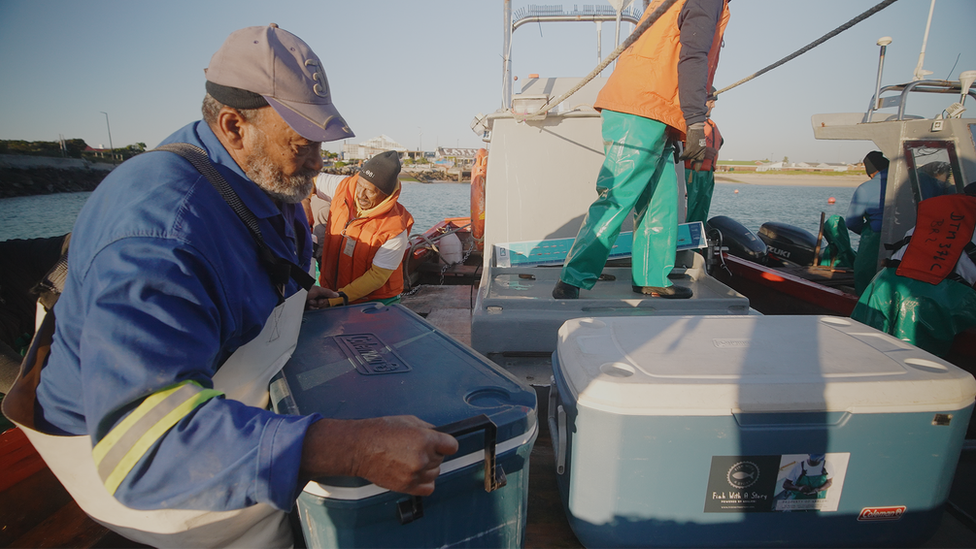
The ABALOBI app means fishers can register their catches - providing data for scientists to research, but also means the community can prove they fish sustainably.
When the app was first used, 60% of the fish logged were species that are classified as "of concern" but now 90% of the fish caught and logged are from fish stocks that are resilient and fine to fish.
The app is used by thousands of fishers from more than 12 countries.
Earthshot Prize to Build a Waste-Free World
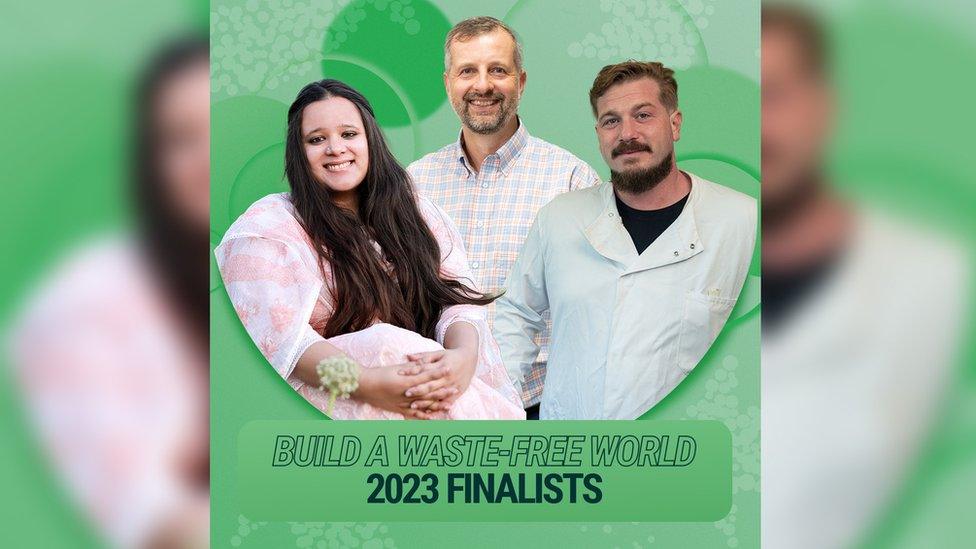
Left to right: Nidhi Pant (S4S Technologies), Peter Majeranowski (Circ) and Orr Yarkoni (Colorfix)
The aim of this prize is to build a waste-free world and celebrates people and companies working towards this.
This includes things like tackling food waste and single-use packaging on both small and large scales.
S4S Technologies
Much of India's population lives outside of the country's cities - rely on farming to make money. But every year about 30% of their produce is wasted before it leaves the farms.
The changing cost of crops and the amount that is grown, which is often more than the demand, forces farmers to leave unsellable crops rotting in the fields. These wasted crops have used precious energy and water used to grow them, and cost the farmers time, resource and money to get rid of.
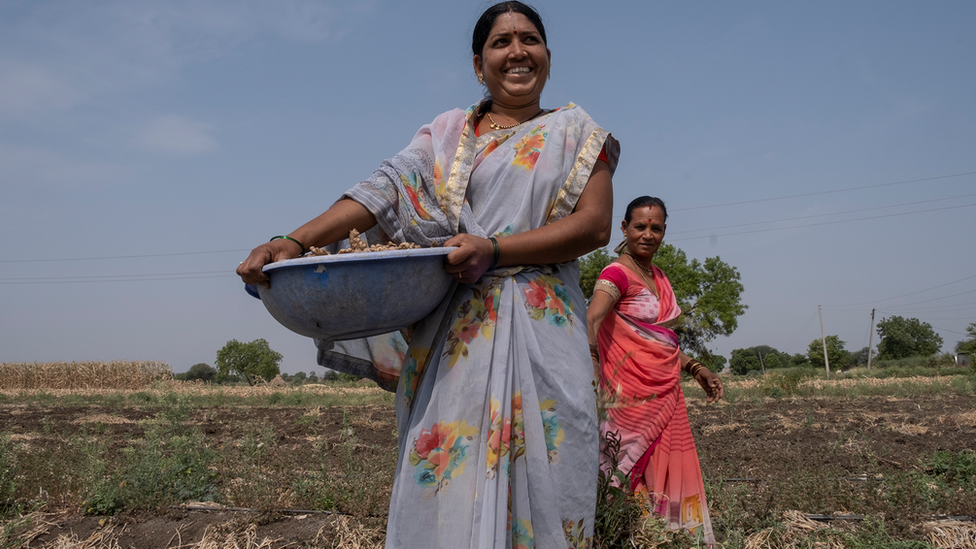
S4S Technologies aim to help by combating the food waste on these farms as well as rural poverty and gender inequality by helping female farmers.
Providing technology such as solar power, S4S is helping these farmers preserve unsold crops, cheaply, while also using the leftover crops to produce and sell valuable food products, such as ketchup.
Circ
Waste from the fashion industry is a big problem for the environment too. It contributes to 92 million tonnes of textiles being burned or filling landfills each year, with less than one percent of textile waste recycled into new clothing.
There are also big technical barriers that prevent the recycling of modern textiles and the ability to reuse them to create new clothing.
One example is polycotton; a synthetic blend of cotton fibres and plastic polymers that accounts for nearly half of all textile waste.
Polycotton takes about 200 years to biodegrade - which means to break down - and it releases chemicals like carbon dioxide, carbon monoxide, and other toxic compounds when burned in incinerators.
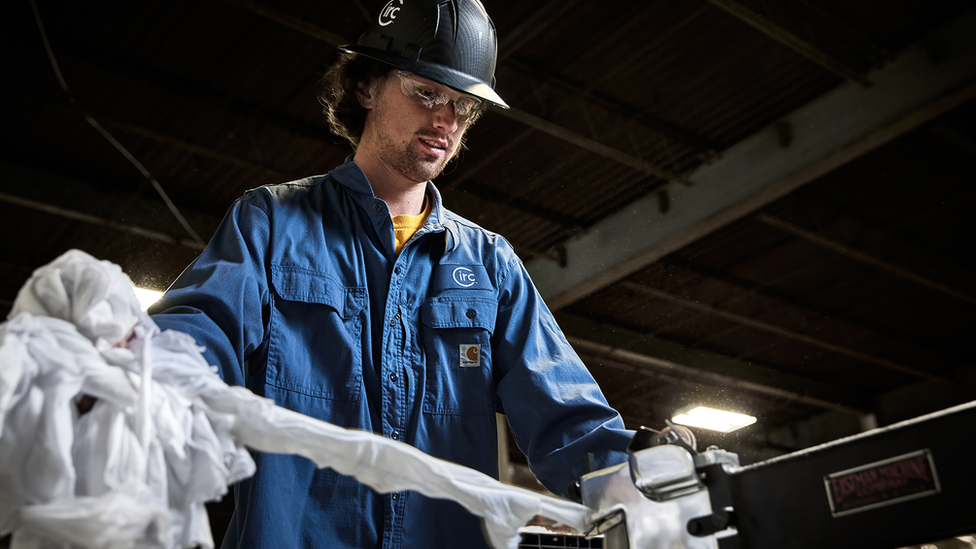
Now US company Circ has developed a way to take polycotton and completely separate the polyester from the cotton fibres.
It involves heated water that turns polyester fibres into a liquid. Preserving and separating the polyester without damaging the cotton, allows both cotton and polyester fibres to be reused in the production of new textiles, while also reducing emissions of greenhouse gasses such as carbon dioxide.
Colorifix
Another environmental problem is the dye and chemicals leftover from colouring clothes.
If not disposed of correctly, chemicals from colour dyes can pollute rivers and harm wildlife. Dyeing clothes also uses vast amounts of water - around five trillion litres every year - the equivalent of two MILLION Olympic-sized swimming pools.

Colorifix has a one solution to avoid hazardous chemical waste, inspired by the natural colours of nature.
Colorifix has created a fabric-dyeing process that uses the DNA codes for colours created naturally by an animal or plants and recreates them to dye clothes.
Earthshot Prize to Fix Our Climate

Left to right: Orianna Bretschger (Aquacycl), Aadith Moorthy (Boomitra) and Sam Elsom (Sea Forest)
Our climate is changing because of carbon dioxide in the atmosphere and global warming greenhouse gases.
The prize will be awarded to people helping to reduce the levels of gases released into our atmosphere, helping to create carbon-neutral communities.
Aquacycl
Treating wastewater from homes and businesses before it re-enters rivers and oceans is vital for protecting wildlife habitats and for stopping the spread of diseases.
However, treating water is expensive and uses a lot of energy - releasing harmful gases into the atmosphere.
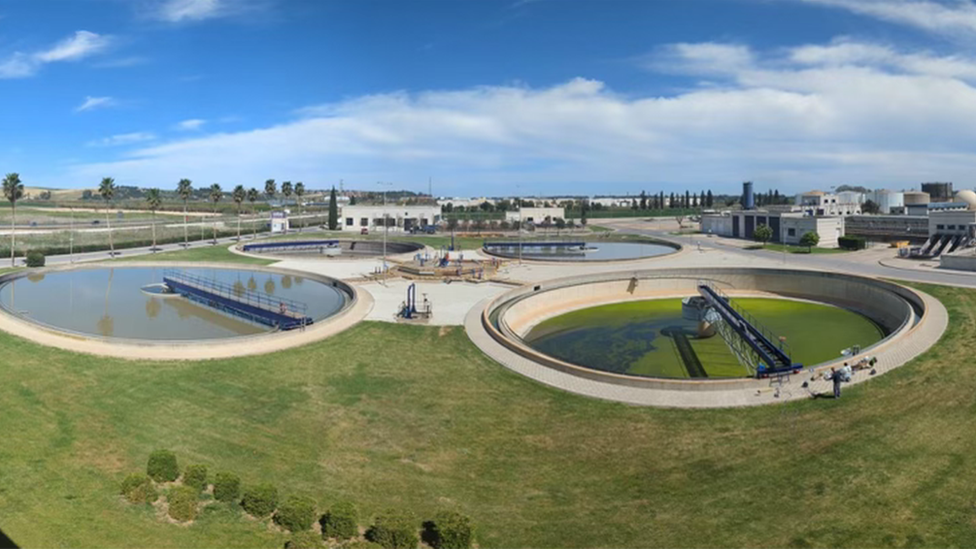
US company, Aquacycl, uses fuel cells that use naturally-occurring bacteria to make even the most polluted water safe.
The fuel cells used in the process also generate their own energy, meaning they use less electricity and are more affordable in the process.
Roughly a third of the world's population lacks access to safe water. Over the next five years, Aquacycl co-founder Orianna Bretschger hopes to improve the lives of 100 million people through the provision of safe, reliable and accessible waste water treatment.
Boomitra
Food production is said to be responsible for more than a quarter of harmful greenhouse gas emissions - one of the biggest causes of global warming.
Globally, farming techniques, such as ploughing, releases large amounts of carbon dioxide into the atmosphere.
Carbon dioxide is locked within soil so when it is disturbed it is released into the air, but if left undisturbed, soils stay full of natural nutrients for crops to grow.
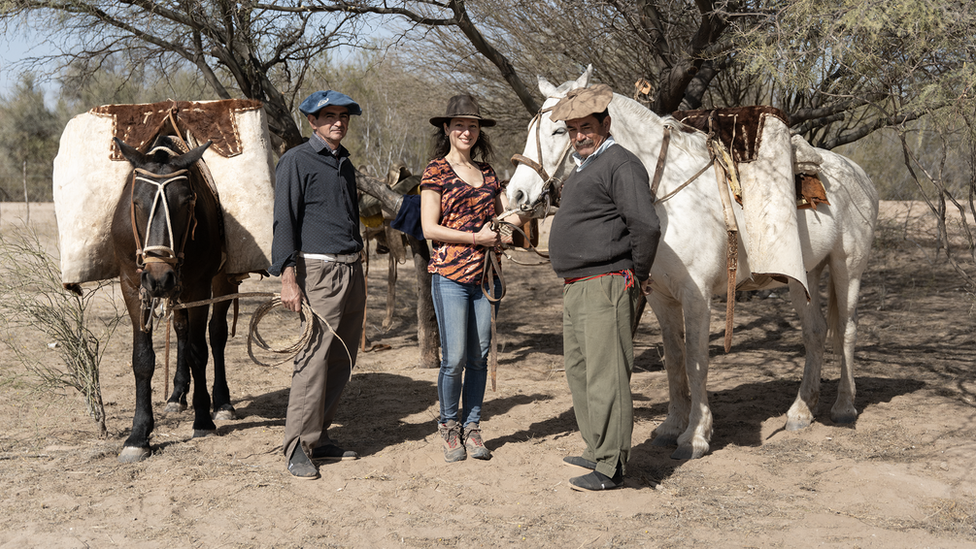
Boomitra works with more than 150,000 farmers managing more than five million acres of land in some of the poorest parts of Africa, South America and Asia.
The aim is to monitor and reward farmers for the improvements they make to the soil, tracking its ability to store carbon over time.
Sea Forest
Earth is home to more than a billion cows and more than 1.2 billion sheep, which provide humans with milk, food and clothing.
But cows and sheep are responsible for an estimated 30% of global methane emissions from breaking wind. Methane is a harmful greenhouse gas - more potent than carbon dioxide in trapping heat in the atmosphere.
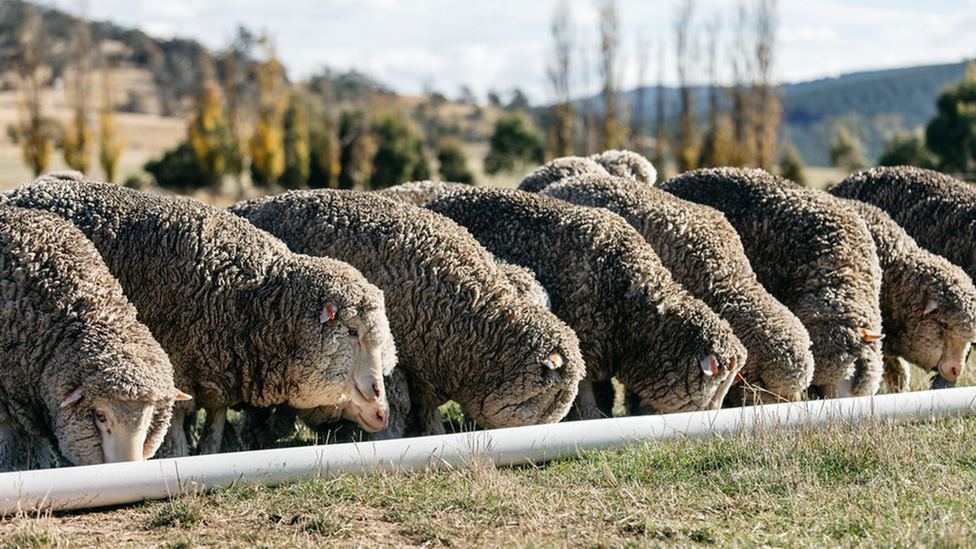
Australian company, Sea Forest, has a solution to make livestock farming virtually methane-free.
The company has developed a new feed supplement for cattle and sheep made from a type of red seaweed, called Asparagopsis.
When included as a tiny fraction of an animal's regular diet, the supplement dramatically reduces the methane released when the animals fart.
- Published19 September 2023
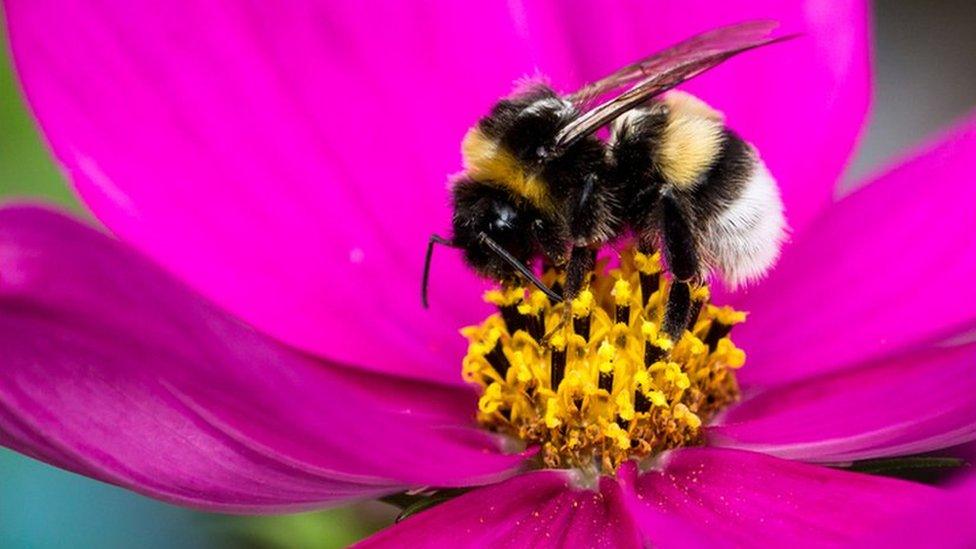
- Published21 September 2023
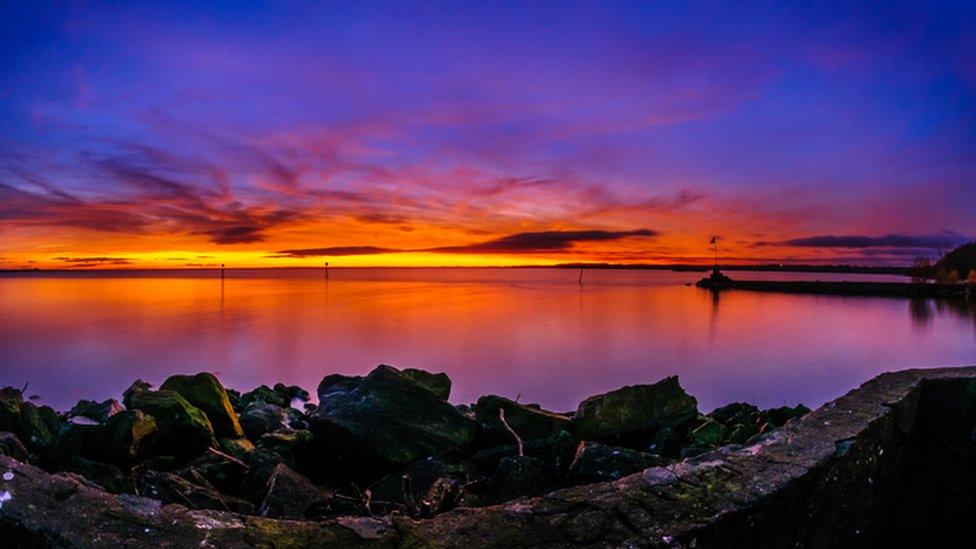
- Published19 September 2023
